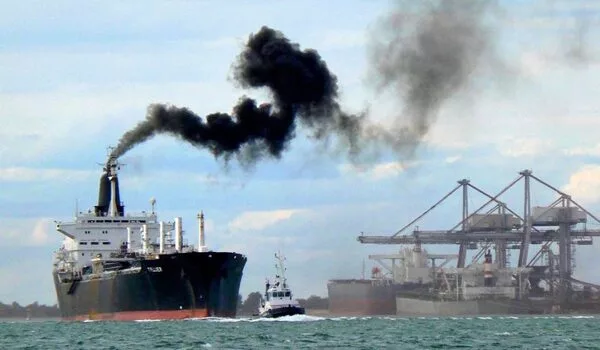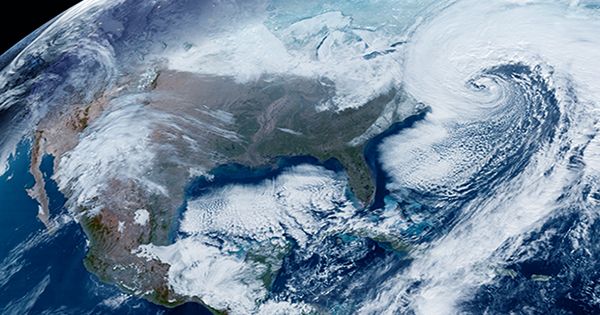Researchers investigated the levels of contaminants emitted from five different sources using four different types of port environments. They discovered that the combined emissions of metals and environmentally hazardous substances endanger the marine environment. Ninety percent of the harmful emissions came from ships outfitted with scrubbers, which are designed to clean the exhaust gases.
Researchers from Chalmers University of Technology in Sweden used four different types of port environments to investigate the levels of contaminants emitted from five different sources in a recently published study. They discovered that the combined emissions of metals and environmentally hazardous substances endanger the marine environment. Ninety percent of the harmful emissions came from ships fitted with scrubbers, whose purpose is to clean their exhaust gases.
According to a new study from Chalmers University of Technology in Sweden, the combined emissions of metals and other environmentally hazardous substances from ships are endangering the marine environment. When the researchers calculated the contaminant load from these emissions into the marine environment in four ports, they discovered that water discharged from ships’ scrubbers, which are designed to clean their exhaust gases, accounts for more than 90% of the contaminants.
A single ship is responsible for a wide range of emissions. Greywater and blackwater discharges from showers, toilets, and drains, antifouling paint, and scrubber discharge water are examples. That is why it is critical to consider the cumulative environmental risk in ports.
Anna Lunde Hermansson
“The results speak for themselves. Stricter regulation of scrubber discharge water is critical to reducing the deterioration of the marine environment,” says Anna Lunde Hermansson, a doctoral student at Chalmers’ Department of Mechanics and Maritime Sciences.
Traditionally, environmental risk assessments (ERA) of shipping emissions have been based on a single source at a time. For example, the ERA could investigate the risk posed by copper in antifouling paints. However, shipping, like all other industries, has multiple sources of emissions.
“A single ship is responsible for a wide range of emissions.” Greywater and blackwater discharges from showers, toilets, and drains, antifouling paint, and scrubber discharge water are examples. That is why it is critical to consider the cumulative environmental risk in ports,” says Anna Lunde Hermansson, who, along with colleagues Ida-Maja Hassellöv and Erik Ytreberg, is behind the new study that examined shipping emissions from a cumulative perspective.
A scrubber is a cleaning system for exhaust gases produced by the combustion of heavy fuel oil, which has been the most common fuel used in ships since the 1970s. To prevent airborne sulphur emissions from reaching the atmosphere, seawater is pumped up and sprayed over the exhaust gases. Scrubbers allow ships to meet the International Maritime Organization’s (IMO) 2020 requirements. The only issue is that the water not only absorbs sulphur from the exhaust gases, causing acidification of the scrubber water, but also other contaminants such as heavy metals and toxic organic compounds. The contaminated scrubber water is then frequently pumped directly into the sea.

Hundreds of cubic metres of contaminated water every hour
“Because there is no cleaning step in between, a single ship can pump out several hundred cubic metres of heavily contaminated water every hour.” Although new guidelines for ERAs of scrubber discharges are being developed, the ERAs still only assess one source of emissions at a time, implying that the overall assessment of the environmental risk is insufficient, according to Lunde Hermansson.
Chalmers researchers examined four different types of port environments to determine contaminant concentrations from five different sources in this new study. For two of the ports, actual data from Copenhagen and Gdynia were used. They were chosen due to the high volume of shipping traffic and the presence of scrubbers on a significant proportion of these ships.
The results showed that the cumulative risk levels in the ports were, respectively, five and thirteen times higher than the limit that defines acceptable risk. Port descriptions used internationally in ERAs were utilised for the other two port environments. One of these environments has characteristics typical of a Baltic Sea port, while the other represents a European port with efficient water exchange due to a large tidal range.
According to the assessment model used, the researchers discovered that three of the four-port environments were prone to unacceptable risks. They also discovered that emissions from antifouling paint and scrubber discharge water were responsible for the highest levels of hazardous substances in the marine environment and contributed the most to the risk. More than 90% of the environmentally hazardous metals and PAHs (polycyclic aromatic hydrocarbons) came from scrubber discharge water, with antifouling paints carrying the most copper and zinc.
Total load is what causes the damage
“If only one source of emissions is considered, the risk of environmental damage may be low or acceptable.” However, when multiple individual emissions sources are combined, an unacceptable risk is created. “The marine organisms exposed to contaminants and toxins don’t care where the contaminants come from; it’s the total load that causes the damage,” Lunde Hermansson says.
In the researchers’ ERA, the only port environment that showed an acceptable risk was the model with the highest water exchange per tidal period, indicating that a large volume of water is exchanged in the port as the tide moves in and out.
“It is critical to remember that contaminated water does not simply disappear; it is transported elsewhere.” There may be a kind of acceptance of environmental damage in the port environments studied – that in this particular environment, we have decided to have an industry, which will result in pollution. When contaminated water is washed out to sea, it can end up in pristine sea areas, where it can have even worse consequences. This is something we are looking into in our research. “We look at the total load, how much is discharged into the environment,” Lunde Hermansson explains.
Having scrubbers on a ship is not a requirement. They are installed and used as an alternative to switching to cleaner and more expensive fuels that emit lower volumes of metals and PAHs. Scrubbers allow ships to continue using the much cheaper and more polluting heavy fuel oil. Heavy fuel oil is a residual product in the distillation of crude oil, and is now used only in maritime transport.
Economical to install scrubbers
Since the mid-2010s, the number of ships with scrubbers installed has increased. In a study conducted in 2018, it was found that there were 178 ships with scrubbers operating in the Baltic Sea. Today, the researchers estimate that there is triple that number. Globally, there are about 5,000 such ships, representing around five percent of the total fleet.
“However, it is the large ships with high fuel consumption that install scrubbers because it is more cost-effective for them to do so.” As a result, we anticipate that they will account for around 30% of total fuel consumption in shipping,” says Lunde Hermansson.
She points out that using heavy fuel oil as a ship fuel also contradicts the IMO’s stated goals of reducing greenhouse gas emissions from shipping by 50% by 2050. The Swedish Agency for Marine and Water Management and the Swedish Transport Agency have proposed to the Swedish Government that scrubber water be prohibited from being discharged into internal waters, that is, waters within the Swedish archipelago.
“It’s a step in the right direction, but we would have liked to see a stronger ban that extends across larger marine areas, while we also understand the challenge for individual countries to regulate international shipping,” says Erik Ytreberg, an associate professor at the Department of Mechanics and Maritime Sciences at Chalmers.
















